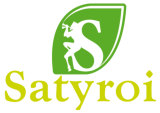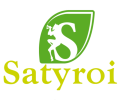What about organic farming
Organic farming is a agricultural method regulated by EC legislation with a first regulation, Regulation EEC 2092/91, and then EC Regulation 834/07 and 889/08 and Italian DM 18354/09 regulation.
“Organic farming” a method of cultivation and breeding refers. Natural substances in nature present, excluding the use of synthetic chemical substances (fertilizers, herbicides, insecticides) only used.
Organic farming means to develop a model of production that avoids natural resources over-exploitation, in particular of the soil, water and air, instead of using these resources as development model that can last over time.
Organic farmers use organic material, and appropriate agricultural techniques to preserve the natural fertility of soil, excluding intensive methods at the same time.
About farming systems, the animals welfare is the goal. They feed on grass and organic feed with no antibiotics, hormones or other substances that artificially stimulate growth and milk production. In addition, animals must be reared in open spaces to move around and graze freely.
The crops
Synthetic chemicals ,fertilizers, herbicides, fungicides, insecticides, pesticides in organic farming do not use. Crop protection is made through, selecting species resistant to disease and intervening with appropriate cultivation techniques, such as, for example:
Crop rotation: not consecutively growing the same plant on the same land, on the one hand hinders the acclimate of the parasites and the other are exploited in a more rational and less intensive soil nutrients;
Hedges and trees planting, as well as creating the landscape, give hospitality to the natural predators of pests and act as a physical barrier to possible external pollution;
Intercropping: growing plants in parallel dislike the other one for the other parasite;
Organic farming use natural fertilizers such as manure and organic composted substances (mowing, etc..). than green manure, associations of different plant varieties that are sown at the same time, such as clover or mustard.
Natural substances plants for crops protection: animals or minerals extracted from plants, beneficial predatory insects, natural mineral or rock flour to correct structure and chemical properties of the soil and to protect the crops from the cryptogams.
Organic cultivation techniques maked the biological balance in farms; however, it becomes necessary, the farmer may appeal only to the substances of natural origin and detailed expressly authorized by the Rules Committee (with the criterion of “positive list”so-called) to protection of crops from pests and other adversities.
Animal farms
Even organic animals farm following regulatory criteria defined by the European Union through the EC Regulation 1804/99 and Italian DM n.91436 on August 4, 2000 Regulation.
General Rules Animals must be fed according to their needs with plant products with the organic production method, preferably grown on the same farm or in the district in which the company falls. Animals breeding with organic methods is closely tied to the land. The number of livestock is reared in close relationship with the available surface area. Farming systems adopted must meet the physiological and ethological needs of the animals. Therefore they must allow the animals bred to express their natural behavior and should guarantee him adequate living systems. Are prohibited embryo transfer and hormones to control ovulation except in the case of veterinary treatment. Genetic manipulation is prohibited. Transport of livestock must be as short as possible and carried out so as to limit the stress suffered by the animals. No brutality during the loading and unloading of animals. No sedatives during the journey. During slaughter or killing time the treatment of animals must limit stress and, at the same time, offer the necessary guarantees with respect to the identification and separation of organic animals from the conventional ones.
Breeds choice
It ‘better to breed indigenous breeds that are well adapted to local environmental conditions, disease resistant and suitable for outdoor housing.
Stables and hygiene standards
Breeding conditions must take into account the innate animals behavior. Specially, breeding structures must be healthy, properly sized for the load of livestock and should allow isolation of the leaders who need medical care. They also need to be sure enough free space available to the animals. For each category of animal species and the EC Regulation 1804/99 defines the minimum space that should be available both indoors (in stables, shelters) and outdoor (paddock and more).
Feeding
Balanced diets should be according to the animals nutritional requirements. The 100% of the feed should be from organic crop. However, to use non-organic foods up to a maximum of 10% for ruminants and 20% for other animals is permitted just in particular cases. That’s from 24 August 2002. Supply prohibited in organic food rations: growth stimulants or appetite stimulants synthetic; preservatives and dyes; urea; animals by-products (eg abattoir waste or fish meal) to ruminants and monogastric herbivores, except for milk and milk products; droppings or other animal waste; foods subjected to treatments with solvents (eg soya meal or other oilseeds) or with added chemicals in general; genetically modified organisms; synthetic vitamins.

